CP+ 2015 Interview: Ricoh’s investment in Pentax, full-frame strategy, lens plans and more
posted Thursday, March 5, 2015 at 11:00 AM EST

Here's another in my series of executive interviews with photo industry executives at the CP+ 2015 show in Yokohama, Japan. This time, I'm speaking with Mr. Kasunobu Saiki, the General Manager of the Marketing Communication Department, in the Global Marketing Division of Ricoh Imaging Co. Limited.
When Ricoh purchased Pentax from Hoya Corporation a few years ago, there was a lot of anxiety among loyal Pentaxians over what it would mean for the brand. Would the Pentax name vanish, and Pentax's unique "personality" as a camera maker be lost? Would it be left to languish, as many felt that it had done under Hoya's control? Or would Ricoh make a serious investment in continuing and extending the Pentax product line?
Happily, the latter seems to have been the case, and we're just now beginning to see some of the first fruits of the merger and investment. Read below for an inside look at how the two companies have been coming together, and what it means for future Ricoh/Pentax products...
Dave Etchells/Imaging Resource: So my first question... Our sense is that the Pentax brand is in the process of experiencing a real resurgence, a growth since it became part of Ricoh.

General Manager
Marketing Communication Department
Global Marketing Division
Ricoh Imaging Co. Ltd.
Kazunobu Saiki/Ricoh Imaging Co. Ltd.: Thanks!
DE: What can you say about the investment that Ricoh has been making in Pentax? Has there been an increase in staffing, especially engineers? I know, too, that Ricoh had engineers, and you brought the two groups together. So what can you say about the level of effort and staffing?
KS: Surely. Now, one of the major investments for Ricoh, for the consumer electronics [company], one larger part is the camera business. That's the reason why Ricoh had acquired Pentax from Hoya.
DE: So strategically, Ricoh wanted to expand the imaging business.
KS: Yes, because one way to further develop the Ricoh Company is to get involved in consumer areas. The core business of Ricoh is B2B [business-to-business], so B2C [business-to-consumer] is really our management's wish to grow. So in that sense, our marriage of Pentax and Ricoh is really in a good direction, with both contributing to each other.
As you pointed out, Ricoh had a group of engineers who specialized in cameras, and Pentax also had engineers. We merged these two groups, and on top of that Ricoh has a big engineering group engaged in technology innovation or fundamental development. Those [R&D] engineers are not part of Ricoh Imaging, but because of the Ricoh Group, now Ricoh Imaging can take advantage of all those technologies to adapt to features in cameras.

At the CP+ show, we have the technology center [in our booth], that I want to show you later on. The Pentax K-S2, which we just announced on the 9th of February, incorporates one innovation, our so-called clarity enhancement technology. That technology was [originated by] the Ricoh Company. So in those ways, the investment, or good marriage of these companies, is really contributing to upgrade our engineering power.
DE: So Ricoh is on the business side, the B2B side. It's a very large company and they have a lot of resources, but a lot of that is oriented around imaging as well.
KS: Yes, right.
DE: So some things like the clarity function came from Ricoh...

KS: Yes, this is one example. Then of course, as a final product, you might recognize the Ricoh Theta, the 360-degree spherical image device. This one, also, was developed with the engineering power of Ricoh.
DE: Oh, interesting.
KS: So in that sense, If I answer your question, we can say... I don't think it's an investment from company A to company B, but these two companies together, that's what is really contributing to the upgrading of technology.
DE: And it's not just a matter of engineer head count. It's also...
KS: Right. Also the laboratories, the background. Sure.
DE: I think I saw an analyst's results, but I can't remember who it was from: I read that despite a declining market overall for interchangeable lens, that Ricoh/Pentax has managed to increase its market share.
KS: I cannot say we have increased the market share [overall]. Maybe in some segments, yes. All we can say is that everybody knows the digital camera market is really facing a strong decreasing trend, especially for the compact camera area. But then our main product is starting from the Pentax 645Z, and we believe this is a really good answer for high-amateur and professional photographers.
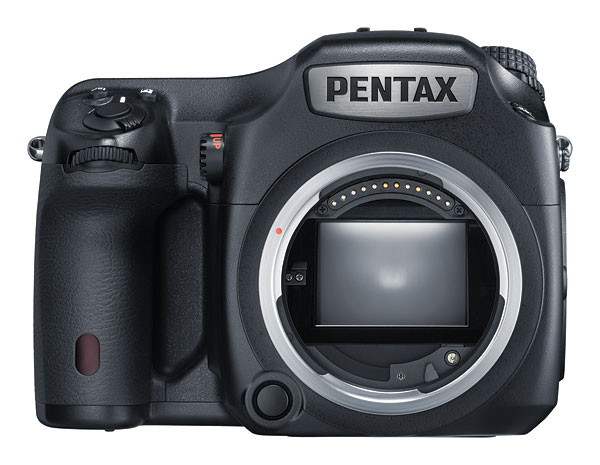
To be frank, the number of 645Z sales is much more than our expectations, so our output capacity could not meet the demand, even today, on a worldwide basis. So in that sense, I can say Pentax has a clear targeting of our target users, or our body of customers according to our product line-up. So the 645Z is really successful, and with the K-mount APS-C models, we believe we are providing the largest assortment of interchangeable lenses for any APS-C DSLR.
DE: Lenses dedicated to APS-C, yeah.
KS: Yeah, dedicated ones. That's why those people in our target group are really appreciating our strong commitment. That's why in the DSLR area, we still have a slight increase [in sales] instead of a decrease. Then with the Ricoh GR, this is already... We believe we've established a kind of legend.
DE: A legend, yes. A reputation.
KS: Yes, a reputation. So this camera is still continuously attracting a certain number of fans and end users. So for this also, our capacity cannot keep up with our demand.
DE: You can't keep up with demand for the GR -- really?

KS: Yes, still. This model was announced two years ago, but the demand has always been steady. Of course the Japanese market has already saturated for the GR, because a lot of early adopters already own it. But then we established the Far East countries, or Asian countries. China is now booming, Taiwan has a really crazy demand for this model right now. So the worldwide total of GR sales in these two years has always been steady, never decreased.
DE: Wow. Even though it's two years old now!
KS: So this is also nice. [grins] And then for our WG-series... For other compact cameras, we have only characteristic models now. But WG is always water-resistant for underwater and so on, right? And then we created the WG-M1, that's an action camera, but in the same concept of the WG-series. So it's very durable, waterproof, and so on. That's why our image for [that type of] user is really established.
So in that sense, okay, [when it comes to] the total number of compact cameras, everybody knows that from 2010 on, already the market has decreased to a level of even one-third. But if we look at the cameras which are durable, like underwater cameras or ones having the WG characteristics, this market in reality, in these last three or four years is growing. We are playing in that market. That's why as a total, for Pentax/Ricoh Imaging, from a certain analysis we can say our products are selling at an increased level, with an increasing trend, not a decreasing trend.

DE: That's very good. So it's a case with Pentax of being very strategic and targeted.
KS: Right, sure.
DE: Not trying to do everything. It's like we have the WG-series, and they have their own identity. I think that is a growing market. It doesn't surprise me that it is growing, because people take so many pictures with cell phones now, but cell phones aren't weather resistant or waterproof, so there's a real need there. But it's very impressive to me that the Ricoh GR has been holding steady for so long.
KS: It's really steady, and they're spreading worldwide. I think that is one of the good things.
DE: So the 645Z was much more than you projected. How much was it, like, twice as many people wanted it, or...?
KS: Frankly, close to.
DE: Close to twice?
KS: Yeah.
DE: Wow, that's really amazing.
[This strikes me as a pretty big deal: Given the popularity of the original 645D, I'm sure that Ricoh/Pentax's projections for the 645Z were pretty aggressive. That it came in at something approaching twice the projected demand is pretty incredible. I think the 645Z has really established a beachhead for Ricoh/Pentax in the professional photography market...]
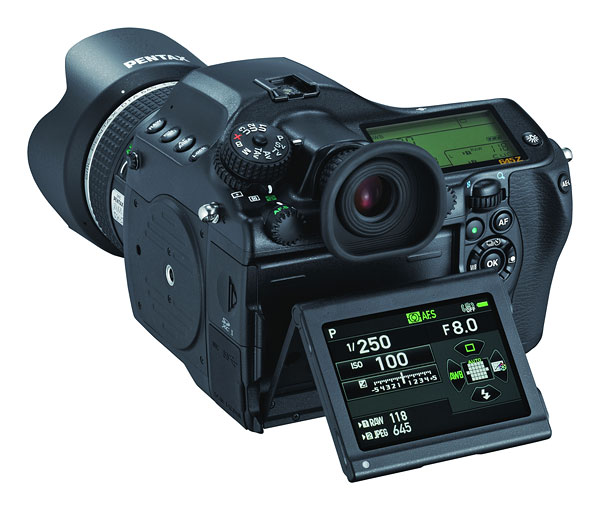
KS: But in order to grasp the total worldwide demand, this is a little bit difficult to simulate. Of course, Phase One and Hasselblad and so on, these competition's numbers [were available to predict the market size]. But depending on the product, the lifetime is different. Some [of those rival products] are, say, ten years.
DE: Yeah, some of the high-end competition has had product lifetimes of ten years. So what you're saying is it's very difficult to project because they're very different products, different product lines.
KS: Yes.
DE: And with the 645Z, I think that's actually opening up new markets that hadn't previously bought medium-format.
KS: Thank you. It's because of the price. It's one of the unique [attributes] of the 645Z... Of course there's product superiority; we can say it's tremendous. So this is the killer spec or killer point for the end user, to have a wider range of end users. On top of that, the 645Z pricing, compared with the competitors... Okay, it's expensive, but for some people that is affordable. It's worth it for the professionals, because they can expect results or images which correspond to that price and investment.
DE: Yeah, they can make money off it.
KS: So as you kindly said, we think we made or we are creating new demand for the medium format since we launched the 645Z.

DE: I was speaking with your Ricoh Imaging Americas president, Jim Malcolm, at the Consumer Electronics Show, and asked him what he thought was the source of some of that demand might be; what new market niches it was opening. He specifically mentioned the wedding photography market. He said that it used to be that pros needed to bring a full-frame camera because somebody's Uncle Albert had a consumer SLR. So the pro needs to look like he's...
KS: Look like a pro, yes.
DE: But now Uncle Albert can afford a full-frame DSLR -- but the medium format sets another level. Besides just the image quality and all that goes along with that, it helps with perception with their customers. Now, at US$8,500, they can afford to make that step up.
KS: Yeah, good point.
DE: Yeah, Jim's a very sharp guy, actually.
KS: Yeah. So Jim and I are going to attend WPPI. [The Wedding & Portrait Photography Conference and Expo.]
DE: Ah - unfortunately I've never been to that show, and people keep saying I need to attend. But I won't be leaving Japan until the 23rd of this month.
KS: Oh, so just one week before WPPI.
DE: Yeah. I had CES, and then a week and a half back home, then I went to Europe for business, and then there was a week and a half, and now I'm here till February 23rd. With all that travel, my wife will forget what I look like, I think, so I can't attend this year.

KS: Oh, I see! So most likely you're half in the air, not on the ground. [laughs]
DE: So you'll be there?
KS: I will be.
DE: I've heard it's actually a very good show, and very useful for the end users.
KS: Yeah. Just as an example, in the China market, our sales of the 645Z are also pretty good. And as you know, the China market is also a big wedding market. They have really big wedding ceremonies there.
DE: Oh, interesting. So maybe part of the good sales of the 645Z is because they have big weddings.
KS: Right.
DE: So you need to go to other countries that have big weddings.
KS: [Laughs] Sure. India!
DE: Yeah, I was just going to say India! [laughs]
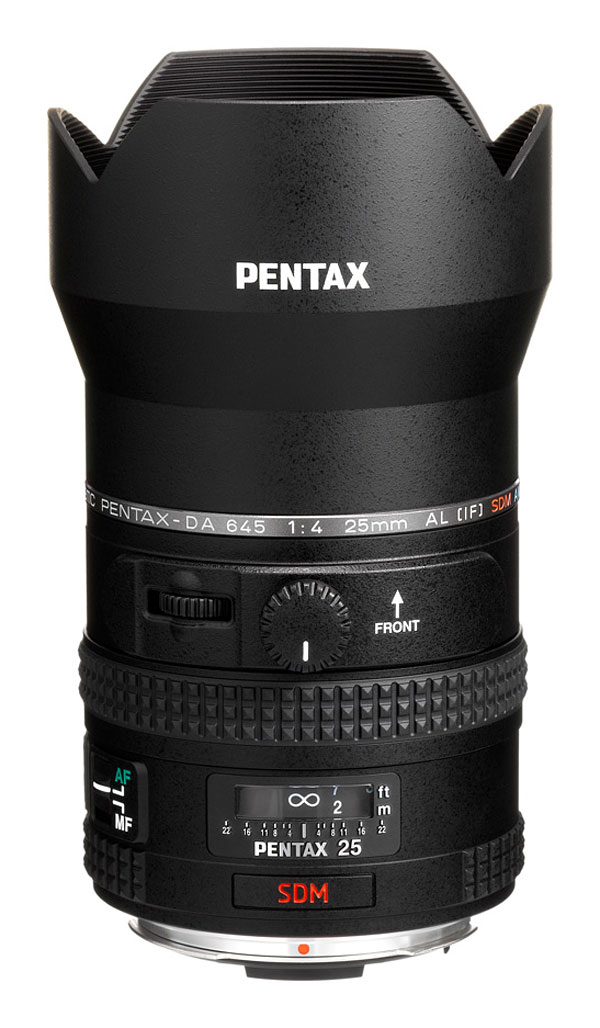
I'm skipping a few questions here for the sake of time... What does your lens manufacturing look like today? Is the demand for the 645Z body reflected by an increased demand for lenses? There are a lot of 645 format lenses out on eBay. Are you seeing a lot of demand for new lenses? What's the attach rate?
KS: We believe there is a lot of demand for new lenses. As I said, the 645Z is luckily seeing good demand, much more than our expectation, but in reality the lens demand is even more.
DE: It's even more? I guess that's a good problem to have!
KS: Yeah.
DE: So not only did you not foresee so much demand for the bodies, but you also didn't realize how many lenses each body would account for.
KS: Right. Of course, we are putting in every effort to supply [more lenses] in time.
DE: ...to increase production, yeah. Can you say anything about the 645 lens roadmap? The last roadmap I remember seeing, there was a...
KS: Standard zoom.
DE: A standard zoom and a tele zoom. I think those are still in the future.
KS: Yeah.

DE: Is there any more information about when those might come to market?
KS: In our CP+ booth, we have three charts [showing our] roadmap for lenses: the 645-mount, K-mount, and Q-mount. To be frank, that chart says only what you already know. I mean, in 2015 or later, we have two lenses [on the way], the standard zoom and the telephoto zoom. That is all the information that we are disclosing at this point.
But from all of what we've learned from the end users' reactions, because of the good sales of the 645Z, we are lucky to have more chances to hear the real demand from end users about the expansion of the systems. So with product planning and of course marketing, our guys now can start to listen more carefully to which direction we should expand the assortment of lenses for the 645Z.
DE: So in response to the demand from users, you're evaluating other elements of the roadmap.
KS: Yes, on top of these things.
DE: With so much demand, are you able to allocate more resources and increase the speed of development, to bring those forward?
KS: Yeah, of course the company's biggest mission is to create a profit. [Laughter] So if we find some chances in certain areas, where we can expect a contribution back to our business...
DE: ...then you'll focus there, yes.
KS: Then naturally we will shift the power of these resources.
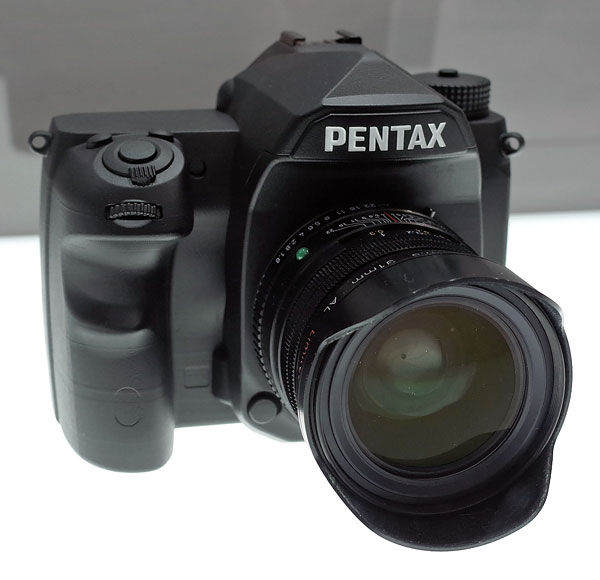
DE: So obviously one of the biggest pieces of news from the entire show here is the pre-announcement of the full-frame Pentax DSLR. Again, this goes back to a conversation I had with Jim Malcolm. Users have been saying, 'We want a full-frame! We want a full-frame!' But I gather there were strategic reasons why you developed the 645 and 645Z first. Can you share some of that thinking with our readers?
KS: Yeah. From long ago, Pentax was a developer of the 35mm film SLRs. So we have huge funds [invested by consumers] on Pentax SLRs. We have accumulated about 20 million lenses sold for the K-mount, so this is one of the big groups we wanted to respect. We wanted to provide a good tool to let them to continue to use their systems. And then we had the 645-mount [also from the film era], and for that one, we wanted to be the only manufacturer for medium format to provide a good product continuously, [meeting] the demand from professionals.
So we had these two wheels -- big wheels -- to drive our business. Then of course, we always try to listen to the opinion or the requirements from our valuable end users, and that was full-frame. So we knew for a long time that a lot of Pentaxians wanted to get full-frame. But at the same time, we want to be one of the biggest manufacturers for APS-C based DSLRs. So that is the model balance, because we have 645Z. If we didn't have the 645Z, full-frame would be the answer, no doubt. But we have 645Z, with 645D-mount lenses, and then the K-mount, with 20 million [lenses]. But all our users for digital were engaged with the APS-C format. So this is one [consideration], and another one is mirrorless or reflex.
[In other words, Pentax historically had K-mount as its mainstream product line, and 645-mount for professional products. Hence, they felt it important to give their professional users on the 645-mount a path forwards before looking to create a high-end model for 35mm, which had, in effect, been their "less" professionally-oriented product line.]
DE: Yeah.

KS: These are also the parallel discussions. I don't mean just for Pentax, but also for the industry in general. So then we did some research, and we listened to our end users. So we took certain steps to develop full-frame. That's why 645Z came first, and then FF comes later.
DE: So one thing is that the 645Z is very unique and it can attract a lot of...
KS: Professionals?
DE: ...professionals, new professionals there. Yeah. So there was nothing like it on the market, but full-frame, there's other full-frames, and you could, 'Oh, okay. Pentax has a full-frame too.' It'd be harder to kind of distinguish yourself so much.
KS: Yeah. But then say, just the pricing, at the time the full-frame came three or four years ago, the price of that product was close to today's 645Z. Right?
DE: Yeah.
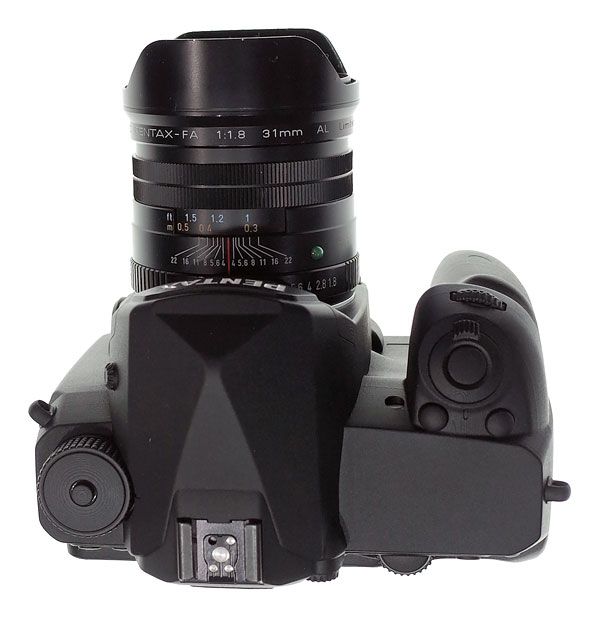
KS: But today's full-frame market is different. Now we can capture the users who want to step up from APS-C. Right? So now our educated end users are starting to upgrade to full-frame because the price of full-frame has somehow matured in comparison with four years ago. Now the 645Z's position, we can meet the demand of professionals and really high-end amateurs who want to play like professionals. And then the FF comes for the end users who are using APS-C DSLRs, or let's say [those owning the] 20 million interchangeable-lenses, to step up.
DE: So it's a matter of the market being ready, the timing.
KS: Yes.
DE: If you had built a full-frame three years ago, that user base wouldn't have been able to afford it.
KS: At that time we wanted to attract that demand for the 645Z. So that is more than Nikon's, more than Canon's DSLR, right? Full-frame, we are one.
[I think what he was saying here is that they could leapfrog full-frame with the 645Z, offering higher resolution and image quality than Nikon and Canon's FF SLRs, and at a not-much different price point than the high end of that market.]
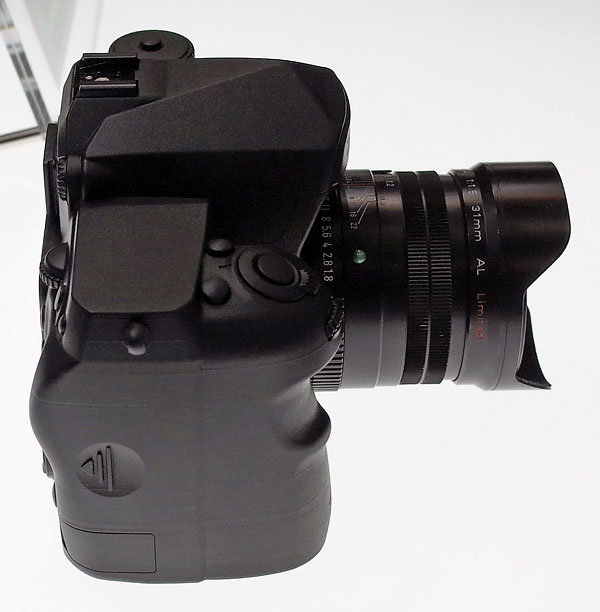
KS: Now this comes, then why not?
DE: That's very interesting. I'm curious -- I didn't have this down as a question in advance, but I'm curious about the strategy to announce the full-frame here because it's a long time before it'll be available. There's things inside, and features you can't talk about yet. What led to announcing it here?
KS: Here, actually we announced only three points. One is that this is the full-frame format DSLR. Second our [APS-C specific] interchangeable lenses could be used with the new full-frame body, with crop function.
DE: Crop functions on the camera, yeah.
KS: This is the second point. The third one is, we are developing this product to be ready in the market at the end of this year. This really is all of what we're saying, right? Then needless to say, we know once we launch our product, that product should be welcomed by our Pentaxians. So far we believe our development, technology side, or marketability, will meet with our Pentaxians expectations.

DE: So my question is sort of -- why now, when all you can say is three things, as opposed to later in the fall, or just closer to the release date?
KS: In reality, we have somehow told [Pentaxians] about our full-frame development for a long time...
DE: People have known about full-frame development.

KS: [For instance], at Photokina time, already we confirmed we are engaged in the development. Then everybody started to ask when, how, what? And then we had a chance to release two new interchangeable lenses which are DFA [the Pentax designation for digital-specific, full-frame optics]. So at this time again, everybody started to talk about full-frame, because it is logical. If Pentax has no intent to release FF, why would we...
DE: Yeah, why make these lenses.
KS: ...yeah, release the lenses. So our marketing/communication team had the idea: Why not start a teaser?
DE: I see. Of course the lenses were a teaser too. It's like, 'Oh, they must really be doing something.' But, so you decided, 'Okay, we'll just announce these three things now, and then more...'
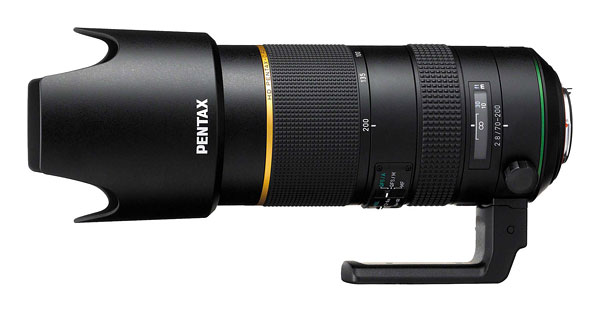
KS: Yes. And then that one was only the mock-up, but after that [debut] of the mock-up, a lot of good or nice information came. Everybody started to try to imagine...
DE: Everybody tried to imagine what it might be like, and rumors spread. Got it.
DE: In our view at Imaging Resource, almost as significant as the disclosure of the full-frame body itself is that you've also just announced those two high-end lenses, the 70-200mm f/2.8 and the 150-450mm f/4.5-5.6. So that says to us there's a very significant commitment to the full-frame, beyond just making the body -- but that is just two lenses. Have you published, or can you share anything about a lens roadmap for full-frame lenses?
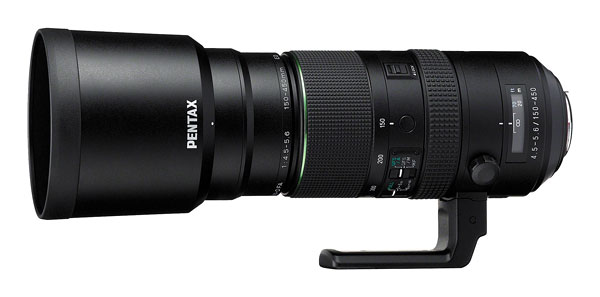
KS: Yeah. So regardless whether they're compatible with full-frame or APS-C [lenses using the crop mode], our commitment to [creating] more interchangeable lenses is very firm. So we will release a nice range of interchangeable lenses, including full-frame, that I can also show you after we go back to the CP+ booth.
DE: So there's a roadmap in the booth talking about or including full-frame?
KS: Yes, but it's very abstract, vague.
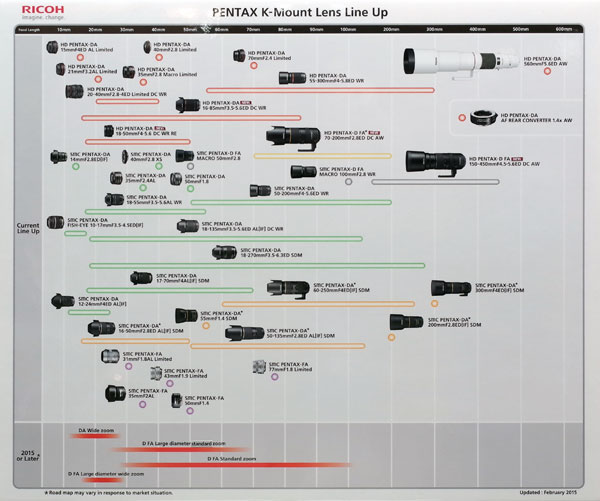
DE: Switching topics slightly, the model numbers for the Pentax K-S1 and K-S2; they're different model numbers. They seem to mark a different direction, but the two cameras are so different from each other. So what is that new model numbering about, and how do the two cameras relate to each other?
KS: So we have the K-series, and now the K-S series. [The K-S series], we have categorized as the innovation series. We are not [talking about it that way] outside [the company], but internally we think the K-series is for core lines like the K-3 -- the real blood or DNA of Pentax. And then the K-S1 or K-S2; with these models we wanted to attract the users who had not had interest in Pentax before, they're new.
DE: Ah - they're not already Pentaxians, these are new users, yeah.
KS: That's why the K-S series exists. Of course, we put the Pentax brand on this model. So that's OK, but on top of that, it has some new approaches, like Wi-Fi connectivity, or the user interface is more user-friendly. Like for movie mode [showing me the ring around the shutter button] this is Red, and then On is blue. So these mobile device-oriented user interfaces, we have implemented into the K-S1 and K-S2.
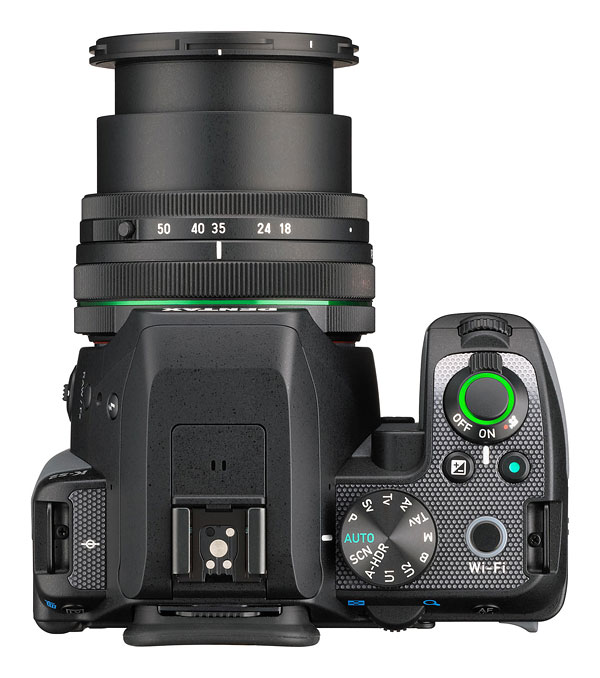
DE: So even with a conventional control, like the power on and movie switch, you're using color cues.
KS: Color cues, and then also the assist for these ones also comes blue. [I'm not sure here, I think he was talking about the AF assist light, but I don't have that in my notes.] And then also, this button is Wi-Fi, but if you turn [the LCD monitor to face forwards], then this Wi-Fi function becomes a shutter button.
DE: Oh, it becomes a shutter. So for selfie mode...
[This is a clever and useful little tweak. Normally, if you tried to flip up the LCD screen to take a selfie, you'd have to try to press the shutter button with your thumb or something, which would be very awkward. Instead, when you flip the screen up on the K-S2, the WiFi button works as a shutter release, in a much more natural location for your index finger to access.]
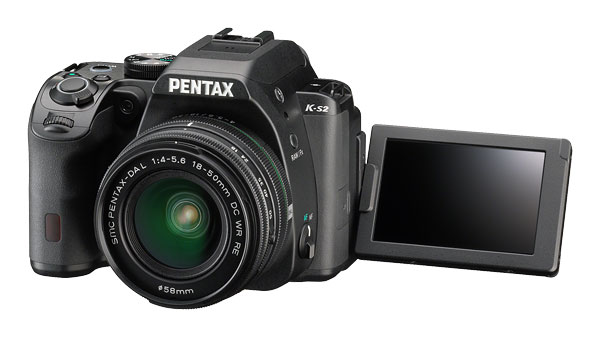
KS: For selfie, yeah. So in these ways the S-series has more features to attract a wider range of photographers.
DE: And so they're a little bit... I'm not sure what the word would be. they're not really experimental, but the K-S series is sort of branching out in a different direction.
KS: Right. Even for the color of the base [of the camera], we take that sense, that's why this one has a bit more fashionable look.
DE: So even the K-S2, which is really enthusiast-oriented, you still have the orange bottom on it. Yeah. So the K-S1 with its bright blue light-show LEDs is perhaps for newer users, younger generation. The K-S2 is maybe...
KS: A bit higher segment, but still we wanted to expand the range of our end users.
DE: Right. So they're a higher segment, but they're people that aren't currently Pentax users, that you're trying to attract.

KS: Yes, we want to get the other people.
DE: So you have a large number of existing lenses. Are there some lenses that are labeled DA, that might actually have a full-frame image circle or larger?
KS: Yes. Okay, we have no official announcement because our engineering team is still engaged in checking them one by one for the full-frame image circles. Needless to say, with the crop function, every interchangeable lens we make could be used. But for the full-frame sized image circles, we need to be very careful to test them first, because we never want to mislead our end users.
DE: ...and have very bad quality at the edges, yeah.
KS: Right, or the other way around. If the end user has a certain good interchangeable lens, but if that user is not informed that it's really compatible for full-frames, maybe that user would lose the chance to use their existing lenses. That's why, in both ways, this information should be very accurate. So we intend to announce the compatibility or some advice at the time of the full-frame camera's release. I think this should be our attitude as a manufacturer, to provide the service to our current users.
DE: Yes. So it sounds like some DA lenses do in fact have full-frame circles, but you want to make very certain before you announce which ones, before you officially endorse them. That's very interesting. That will be good news to many Pentaxians.

So concludes my interview with Mr. Saiki of Ricoh. There certainly appear to be some interesting times ahead for Pentaxians, and it's great to see the new vigor and new products flowing from Ricoh's acquisition of the Pentax brand and the merging of the two engineering teams. Stay tuned for a separate article on some of Ricoh's technology announcements at the CP+ 2015 show. There's some pretty interesting stuff there, not only looking forward to the upcoming full-frame body, but perhaps for existing Pentax owners as well!